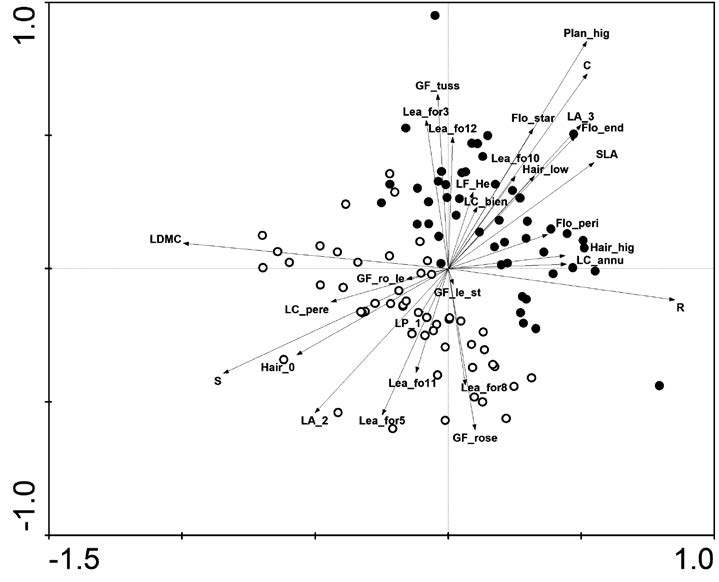Floristic and Functional comparision of karst pastures and karst meadows from the North Adriatic Karst
DOI:
https://doi.org/10.3986/ac.v40i3.61Abstract
In the present study, we compared the species richness and the floristic and functional composition of two types of extensively managed, species rich dry grasslands (class Festuco-Brometea) from the North Adriatic Karst: karst pastures (alliance Satureion subspicatae) and karst meadows (alliance Scorzonerion villose). Karst pastures are characterized by shallow rocky soils, high pH, and dry, warm conditions, whereas karst meadows have developed on deeper soil, with more humus and moisture and neutral to alkaline pH. The data set included a table with 100 phytosociological relevés of the studied grasslands and a matrix with 15 functional traits determined for 180 plant species. we found high species richness in these grasslands but no statistically significant differences in species richness between karst pastures and meadows. Differences in floristic composition were analysed with Detrended Correspondence Analysis, which supported a clear division between the two vegetation types and indicated that species composition could best be explained in terms of soil humidity and nutrient availability. We also detected several differences in plant functional traits between meadows and pastures. Some of the traits indicate greater resource availability on karst meadows (in particular, high SLA, low LDMC). In contrast, karst pastures have more slow-growing species with a combination of traits that can be interpreted as an avoidance strategy in relation to disturbance (e.g., grazing) in low productive habitats (e.g., low SLA, high LDMC, early flowering species and plants with rosette). A lower relative proportion of competitors (C) and ruderals (R), and a higher relative proportion of stress-tolerators (S) in karst pastures also suggested that these grasslands generally experience higher intensities of stress when compared to karst meadows, presumably owing to lower resource availability on stony, shallow soil. we could conclude that karst meadows and pastures differ significantly in both floristic composition and functional trait means, owing to their distinctive land-use (disturbance) and environmental conditions.Downloads
Download data is not yet available.

Downloads
Published
2011-12-31
How to Cite
Pipenbaher, N., Kaligarič, M., & Škornik, S. (2011). Floristic and Functional comparision of karst pastures and karst meadows from the North Adriatic Karst. Acta Carsologica, 40(3). https://doi.org/10.3986/ac.v40i3.61
Issue
Section
Original papers
License
Authors guarantee that the work is their own original creation and does not infringe any statutory or common-law copyright or any proprietary right of any third party. In case of claims by third parties, authors commit their self to defend the interests of the publisher, and shall cover any potential costs.
More in: Submission chapter




